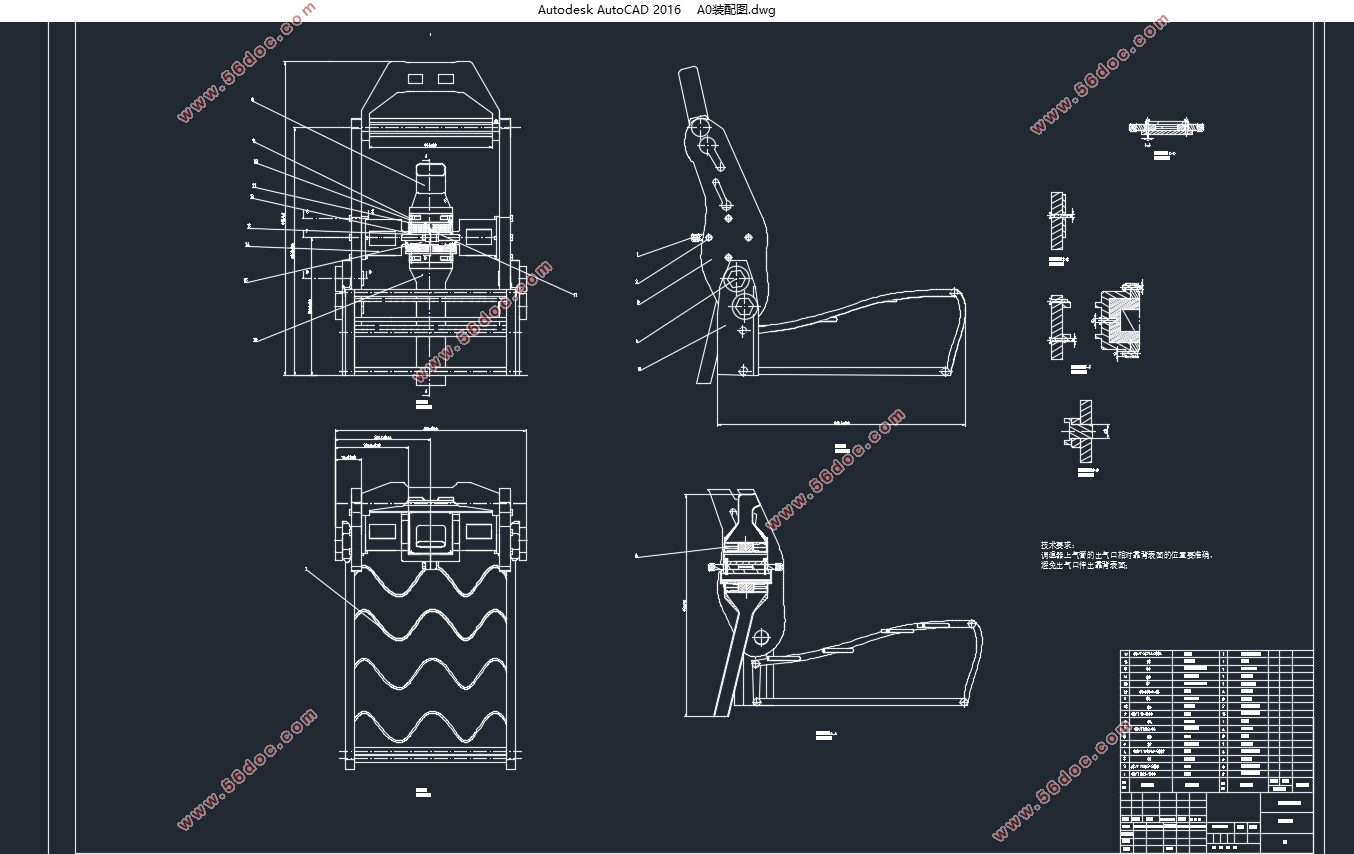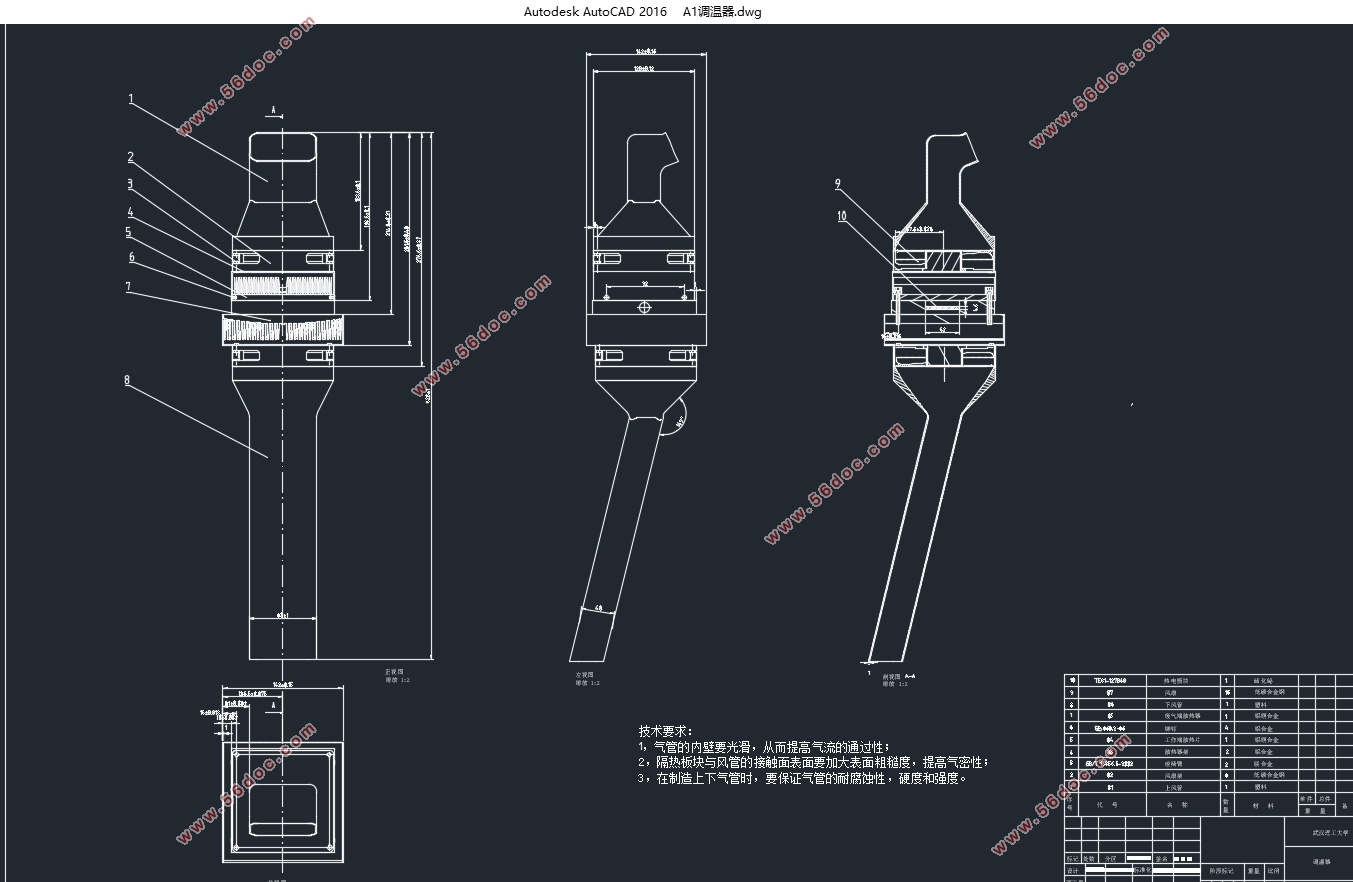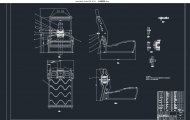基于空调座椅的车内热舒适性分析(含CAD零件图装配图)(任务书,开题报告,文献摘要,外文翻译,论文说明书29000字,CAD图3张)
摘 要
众所周知,随着汽车行业的飞速发展,人们对汽车的要求越来越高。从通过性、安全性,到动力性和燃油经济性,再到本文所关注的热舒适性。传统的汽车上,只有空调系统能对乘员舱的温度进行调节,使得车内的热舒适不太高。例如,在夏天,地面温度高,光照强,车内十分闷热,汽车空调无法快速调节乘员舱的温度。而空调座椅的快速制冷功能,则可以很好的弥补空调系统的不足,它通过出风口的通风和调温功能,迅速散去出风口附近的热量,为驾乘人员更为舒适的乘坐体验。在另一方面,初秋的时候,车内温度稍低,但开了空调车内会过热,十分尴尬。而如果开了空调座椅,则可以避免这一问题。
本文对空调座椅进行了调研,设计了一种基于热电制冷模块的空调座椅,并在此基础上,建立了空调座椅与空调系统的仿真模型,对车内的热舒适性进行了分析。主要设置了两种工况,一种是空调系统与空调座椅一起出风的情况,另一种是空调座椅不出风,仅空调系统出风的工况。本文对两种工况的计算结果进行了对比分析,确定了空调座椅对提高车内热舒适性的作用。对空调座椅在国内的发展前景,进行了预测。
研究结果表明:乘员舱内如果安装了空调座椅,其热舒适性会得到一定程度的改善。但是仅仅集中表现在人体的臀部与背部(即人与座椅接触的部分),距离空调座椅出风口较远的地方,影响较小。
本文的特色:在仿真计算时,将有无空调座椅的车内环境状况进行了对比,从而得出了空调座椅对乘员舱内的热环境所起到的作用。
关键词:空调座椅;空调座椅的调研;热舒适性;仿真
Abstract
As is known to all, with the fast growth of the auto industry, people's demand for the car is more and more high. From the travel ability and security, to dynamic performance and fuel economy, and then to the thermal comfort which is the attention of this paper. In the traditional car, only the air conditioning system can adjust the temperature of the passenger compartment, which leads to the limitation of the thermal comfort. For example, in the hot summer, due to the high ground temperature and intense sunlight, the temperature in the car is very hot, so the air conditioning cannot cooling the environment quickly, but the ventilated seat can make up it. At the same time, the ventilated seat’s the heating function, can solve an embarrassing situation in early autumn, in which passengers will feel a litter hot as the air conditioning is on, but they will feel cold when the air conditioning is off.
This paper conducts a survey on the ventilated seat, and designs a kind of ventilated seat, which bases on the thermoelectric cooling module, and establishes a simulation model of the ventilated seat and air conditioning system. Two conditions are considered, one is that the air conditioning system and ventilated seat winding together, the other is only the air conditioning system winding. Through the calculation of two kinds of conditions, the results are analyzed. Though this analysis, the impact of the ventilated seat is found. This paper also forecast the development of ventilated seat.
The results show that, if the ventilated seat is installed, the thermal comfort in car will be improved in some extent. But the improvement only intensively displays in the body of the buttocks and back, it is not that obvious in the other place.
The characteristics of this paper: in the simulation calculation, there will be two condition. One is that the air conditioning system and ventilated seat winding together, the other is only the air conditioning system winding. Though this contrast, the impact of the ventilated seat on the environment of the cabin is determined.
Key Words: ventilated seats; investigation for ventilated seats ;Thermal comfort; Simulation
空调座椅的工作原理
通过对于上述专利的调研,我们不难发现:汽车空调座椅主要是由基于热电模块的调温器、风管以及骨架等构成。具体的构成将在下面的小节中一一呈现。当驾驶员打开调温器之后,风扇将外界空调导入到调温器内,通过调温器一头的散热片将空气迅速制冷或制热,并在风管均匀分散,最后通过空调座椅出风口,吹向驾驶人员,达到调节温度的目的。由于热电模块的工作原理基于珀尔贴效应,由交替的n型和p型热电模块组成的碲化铋半导体热电装置,将电能转换为温度梯度。两个半导体夹在两相对的平坦表面裸露的陶瓷块之间,形成P–N和N–P路口[34]。由于珀尔贴效应,在电流通过时,由于热量转移而产生温度差异发生在热电装置的两侧。两侧的吸收和发射的热量取决于珀尔贴效应和电流的强度,而发射或吸收的两端的装置在进行交换时,电压源的极性是也相应互换。
所以,调温器的另一头,会产生废热或者废冷,通过位于该侧的散热片,可将废热或废冷,通过热传导传递到散热片周围的空气中,在风扇的推动下下,空气沿着风管流出车外。驾乘人员可以根据天气或季节的不同,随意更换制冷或制热状态,根据舒适程度,随意调节制冷或制热强度,从而提高自身的热舒适性。
汽车空调座椅一般在两处设置出风口,一个是坐垫上,另一个是座椅靠背表面。这两个地方的出风口都有通风和制热/制冷功能。通风功能是指空调座椅能加速空气的流动速度,使出风口附近的湿度更低。制热/制冷功能则是指空调座椅能调节出风口处的空气温度,夏天制冷,冬天制热,提高热舒适性。




目录
摘 要 III
Abstract II
第1章 绪论 3
1.1汽车空调座椅的研究背景 3
1.2汽车空调座椅的国内外发展现状 6
1.2.1国内发展现状 6
1.2.2国外发展现状 7
1.3汽车空调座椅研究的意义 8
1.4 主要研究的内容 9
1.5 本章小结 10
第2章 汽车空调座椅概述 11
2.1汽车空调座椅简介 11
2.2 汽车空调座椅的出现与发展 12
2.2.1汽车空调座椅概念的提出 12
2.2.2汽车空调座椅在我国的发展 13
2.3汽车空调座椅的市场调研 13
2.3.1外置汽车空调座椅装置调研 14
2.3.2内置空调座椅装置调研 17
2.4空调座椅的工作原理 18
2.5空调座椅零部件简介 19
2.5.1散热风扇简介 20
2.5.2调温器简介 1
2.6本章小节 3
第3章 空调座椅设计 5
3.1 调温器的设计 6
3.1.1空气散热片设计 6
3.1.2散热风扇设计 7
3.1.3 热电模块的选用 8
3.1.4 隔热板块 10
3.1.5 风扇支架设计 11
3.2 空调座椅骨架设计 11
3.3 调温器支架设计 13
3.4上下风管的设计 13
3.5 空调座椅的装配 15
3.6本章小结 16
第4章 所用软件介绍 17
4.1 ICEM介绍 17
4.2 FLUENT介绍 18
4.3本章小结 19
第5章 基于空调座椅的热舒适性分析 20
5.1几何模型的简化 20
5.2几何模型的建立 20
5.3仿真分析前处理 21
5.4计算模型的建立 23
5.5 分析 24
5.5.1数据输入 24
5.5.2边界条件和计算方法 25
5.6对仿真结果的分析 26
5.7 仿真误差分析 33
5.8 本章小结 33
第6章 总结与展望 35
6.1 结论 35
6.2展望 36
参考文献 38
致 谢 41
|









